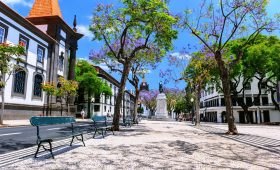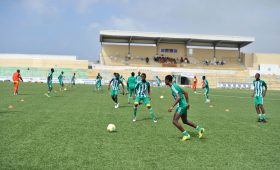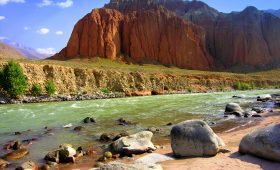Exploring the Caprivi Strip: Namibia’s Unique Region
What Makes the Caprivi Strip Unique?
The Caprivi Strip, also known as the Zambezi Region, is a distinctive area in Namibia, named after German Chancellor Leo von Caprivi. This region was acquired from Great Britain in 1890 to provide a river connection to the German colony of Tanganyika, though the plan was thwarted by the presence of Victoria Falls. Despite its colonial history, the area is now known for its rich biodiversity and cultural diversity.
The region is characterized by its tropical, wet climate and is home to four major rivers: the Okavango, Kwando, Chobe, and Zambezi. These waterways support a variety of ecosystems, making the Caprivi Strip a haven for wildlife enthusiasts. Visitors can expect to see an array of wildlife, including elephants, hippos, and numerous bird species.
Culturally, the Caprivi Strip is home to several indigenous communities, including the San, Himba, and Lozi people. These groups have maintained their traditional lifestyles, offering visitors a chance to engage with their rich cultural heritage.
Best Time to Visit
The optimal time to visit the Caprivi Strip is during the dry season, from May to October. During these months, wildlife tends to gather around the rivers, providing excellent opportunities for game viewing. However, travelers should be aware that the wet season, from November to April, can bring flooding, which may limit access to certain areas. Always check local weather conditions and road accessibility before planning your trip.
How to Get There
Traveling to the Caprivi Strip is an adventure. While there are small landing strips in the region, the most practical way to arrive is by road. The B8 highway, part of the Trans-Caprivi Highway, is the main route. Travelers from Zambia can enter via the bridge over the Zambezi at Sesheke, while those from Botswana can cross the Chobe River at Ngoma.
For those starting in Namibia, a road trip from Windhoek is an option, though it takes about 10-12 hours. Consider breaking up the journey with overnight stops in towns like Rundu or Divundu.
Local Transportation
Once in the Caprivi Strip, transportation options include hiring a car, using public minibuses, or joining guided tours. Renting a car offers the freedom to explore at your own pace, but be prepared for varying road conditions. The B8 is well-maintained, but other roads, especially in the wetlands, may require a 4×4, particularly during the rainy season.
Public minibuses connect major towns, though they may not offer the same flexibility as having your own vehicle. For a more structured experience, consider booking with a tour operator. Guided safaris and cultural tours provide valuable insights into the region’s wildlife and cultural heritage.
Activities and Accommodation
The Caprivi Strip is home to several national parks that are less crowded than those in neighboring Botswana. Visitors can enjoy game drives, camping trips, and boat cruises. Mashi River Safaris, for example, offers river safaris on the Kwando River floodplain, providing a unique perspective of the area’s wildlife.
Accommodation options range from campsites to lodges. Chobe River Camp offers chalets and camping facilities with views of the Chobe River, while Namushasha River Lodge provides a forested retreat on the banks of the Cuando River. Be aware that some activities, like boat tours, may be unavailable if river levels are low.
While the Caprivi Strip offers a rich travel experience, it’s essential to plan carefully and be prepared for the region’s challenges, such as varying road conditions and seasonal flooding. With the right preparation, a visit to this unique part of Namibia can be both rewarding and memorable.




